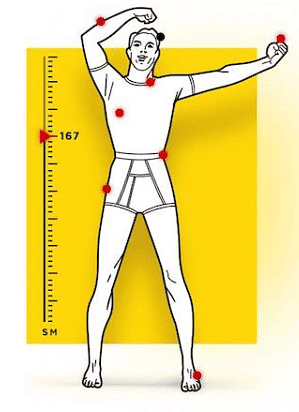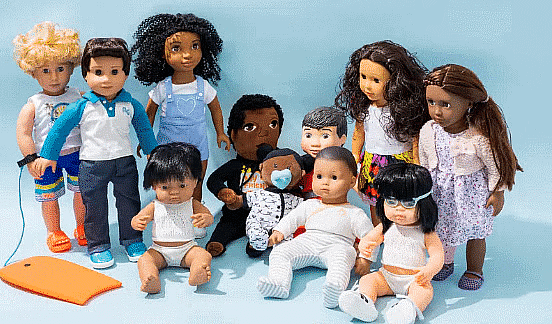Class 4 Maths - Measurement - CBSE Worksheets Solutions
 Q1: How much more is to be added to 500 g to make it equal to 1 kg?
Q1: How much more is to be added to 500 g to make it equal to 1 kg?
Ans: 1 kg = 1000 g
½ kg = 500 g
So, we need 500 g to make it equal to 1 kg.
Q2: A 1 I bottle is half full. How many milliliters are there in the bottle?
Ans: 1 l = 1000ml
½ l = 500 ml
So, the bottle has 500 ml
Q3: Convert the following lengths into centimeters: 1 m = 100 cm
(i) 16 m
Ans: 16 x 100 = 1600 cm
(ii) 45 m 50 cm
Ans: 45 x 100 + 50 = 4550 cm
Q4: Express as centimetres: 1m = 100 cm
(i) 12 m
Ans: 12 x 100 = 1200 cm
(ii) 152 m
Ans: 152 x 100 = 15200 cm
(iii) 16 m
Ans: 16 x 100 = 1600 cm
(iv) 5 m 40 cm
Ans: 5 x 100 + 40 = 540 cm
(v) 96 m 5 cm
Ans: 96 x 100 + 5 = 965 cm
Q5: Express as millimeters: 1 cm = 10 mm
(i) 19 cm
Ans: 19 x 10 = 190 mm
(ii) 73 cm
Ans: 73 x 10 = 730 mm
(iii) 8 cm
Ans: 8 x 10 = 80 mm
(iv) 97 cm 8 mm
97 x 10 + 8 = 978 mm
Q6: Express as metres:
1 cm = 0.01 m
(i) 2,465 cm
To convert centimetres to meters, multiply by 0.01.
= 2,465 × 0.01
= 24.65 m
(ii) 73 cm
To convert cimeters to meters, multiply by 0.01.
= 73 × 0.01
= 0.73 m
(iii) 172 cm
To convert cimeters to meters, multiply by 0.01.
= 172 × 0.01
= 1.72 m
(iv) 483 cm
To convert cimeters to meters, multiply by 0.01.
= 483 × 0.01
= 4.83 m
(v) 450 cm
To convert cimeters to meters, multiply by 0.01.
= 450 × 0.01
= 4.50 m
Q7: Express as kilometres:
1m = 0.001 km
(i) 8,560 m
To convert meters to kilometres, divide by 1,000.
8,560 ÷ 1,000 = 8.560 km
(ii) 9,567 m
To convert meters to kilometres, divide by 1,000.
9,567 ÷ 1,000 = 9.567 km
Q8: Express as centimetres:
1 cm = 0.1 mm
(i) 37 mm
To convert millimetres to centimetres, divide by 10.
37 ÷ 10 = 3.7 cm
(ii) 83 mm
To convert millimetres to centimetres, divide by 10.
83 ÷ 10 = 8.3 cm
Q9: Add:
(i) 7 m 62 cm + 12 m 45 cm
Ans: = 20m 07cm
(ii) 12 cm 6 mm + 25 cm 9 mm
Ans: = 38cm 5mm
(iii) 2 cm 7 mm + 4 cm 9 mm
Ans: = 7cm 9mm
(iv) 5 km 439 m + 16 km 851 m
Ans: = 22km 290m
(v) 78 km 126 m + 93 km 508 m
Ans: = 171km 634 m
Q10: Subtract:
(i) 18 cm 4 mm - 7 cm 7 mm
Ans: = 10 cm 4 mm
(ii) 86 cm 2 mm- 57 cm 5 mm
Ans: = 28 cm 7 mm
(iii) 76 km 293 m - 38 km 508 m
Ans: = 37 km 785 m
(iv) 125 m 12 cm - 68 m 56 cm
Ans: = 56 m 56 cm
(v) 37 km 832 m - 15 km 948 m
Ans: = 21 km 884 m
Q11: Express as kg and g:
1 g = 0.001 kg
(i) 3,208 g
To convert grams to kilograms, multiply by 0.001.
3,208 × 0.001 = 3.208 kg
(ii) 12,670 g
To convert grams to kilograms, multiply by 0.001.
12,670 × 0.001 = 12.670 kg
(iii) 18,196 g
To convert grams to kilograms, multiply by 0.001.
18,196 × 0.001 = 18.196 kg
(iv) 8,005 g
To convert grams to kilograms, multiply by 0.001.
8,005 × 0.001 = 8.005 kg
(v) 38,450 g
To convert grams to kilograms, multiply by 0.001.
38,450 × 0.001 = 38.450 kg
Q12: Answer the following questions:
(i) Kartik's doll weighs 2 kg 890 g and Manohar's doll weighs 3 kg 890 g. What is the weight of both the dolls?
 Ans: Kartik's doll weighs = 2 kg 890 g
Ans: Kartik's doll weighs = 2 kg 890 g
Manohar's doll weighs = 3 kg 890 g
Weight of both dolls = 6 kg 780 g
(ii) The weight of a watermelon is 3 kg 425 g. The weight of a pineapple is 2 kg 530 g. By how much is the watermelon heavier?
Ans: The weight of a watermelon = 3 kg 425 g
The weight of a pineapple is = 2 kg 530 g
Watermelon is heavier by = 3 kg 425 g - 2 kg 530 g = 895 g
(iii) Sanjay bought 100 kg of wheat for his family for a month. Out of this, the quantity of wheat consumed was 76 kg 450 g. What quantity of wheat was left?
Ans: Sanjay bought wheat for his family for a month = 100 kg
The quantity of wheat consumed = 76 kg 450 g
Quantity of wheat left = 100 kg - 76 kg 450 g = 23 kg 55 g
Q13: Express as l:
1ml = 0.001L
(i) 2,645 ml
To convert millilitres to litres, multiply by 0.001.
2,645 × 0.001 = 2.645 l
(ii) 45,673 ml
To convert millilitres to litres, multiply by 0.001.
45,673 × 0.001 = 45.673 l
(iii) 90,003 ml
To convert millilitres to litres, multiply by 0.001.
90,003 × 0.001 = 90.003 l
(iv) 56,210 ml
To convert millilitres to litres, multiply by 0.001.
56,210 × 0.001 = 56.210 l
(v) 1,309 ml
To convert millilitres to litres, multiply by 0.001.
1,309 × 0.001 = 1.309 l
Q14: Express as ml:
1 l = 1000 ml
(i) 83 l
Ans: = 83000 ml
(ii) 103 l
Ans: = 103000 ml
(iii) 29 l 785 ml
Ans: = 29000 + 785 = 29785 ml
(iv) 5 l 210 ml
Ans: = 5000 + 210 = 5210 ml
(v) 2 l
Ans: = 2000 ml
Q15: Subtract:
(i) 63 l 156 ml - 34 l 475 ml
Ans: = 28 l 681 ml
(ii) 60 l 708 ml - 18 l 619 ml
Ans: = 42 l 089 ml
(iii) 8 l 425 ml - 3 l 720 ml
Ans: = 4 l 705 ml
(iv) 18 l 636 ml - 12 l 950 ml
Ans: = 5 l 686 ml
Q16: Add:
(i) 12 l 490 ml + 15 l 540 m
Ans: = 28 l 030 ml
(ii) 21 l 260 ml + 18 l 905 ml
Ans: = 40 l 165 ml
(iii) 62 l 275 ml + 39 l 890 ml
Ans: = 102 l 165 ml
(iv) 5 l 750 ml + 8 l 125 ml
Ans: = 13 l 875 ml
Q17: 12,705 ml = ______ l _____ ml.
Ans: 12,705 ml = 12 l 705 ml.
Q18: 36 km = ______ m = ______ cm.
Ans: 36 km = 36000 m = 3600000 cm.
Q19: 75 mm = ______ cm _______ mm.
Ans: 75 mm = 7 cm 5 mm.
Q20: 12 kg 10 8 g = ______ g.
Ans: 12 kg 10 8 g = 12108 g.
|
33 videos|168 docs|30 tests
|
FAQs on Class 4 Maths - Measurement - CBSE Worksheets Solutions
| 1. What are the common units of measurement used in the metric system? |  |
| 2. How do you convert between different units of measurement? |  |
| 3. What is the importance of understanding measurement in daily life? |  |
| 4. What tools can be used for measuring length, weight, and volume? |  |
| 5. How can I improve my measurement skills? |  |






















